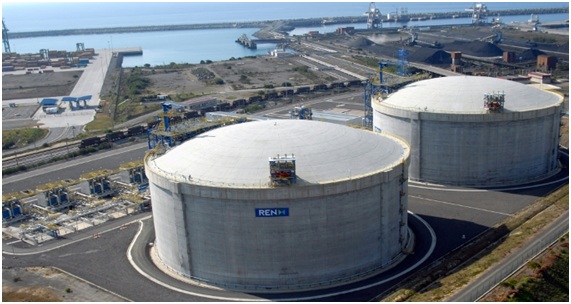Since their Joint Statement of 25 July 2018 in Washington D.C., when European Commission President Jean-Claude Juncker and US President Donald Trump agreed to strengthen EU-U.S. strategic cooperation including in the area of energy, EU imports of liquefied natural gas (LNG) from the U.S. have increased by 181%.
The first EU-U.S. Energy Council High-Level Forum will take place on 2 May 2019 in Brussels.
The release of these new LNG figures coincides with European Trade Commissioner Cecilia Malmström‘s and Secretary-General Martin Selmayr‘s visit to Washington this week for meetings with their U.S. counterparts within the Executive Working Group. The implementation of the different elements of the Joint Statement of Presidents Juncker and Trump was one of the topics addressed. The recent developments on LNG trade attest to the European Union’s continued commitment to deliver on all aspects of the 25 July agreement.
With a share of 12,6% of EU-LNG imports in 2019 so far, the U.S. is Europe’s third biggest supplier of LNG[1]. The European Union is ready to facilitate more imports of liquefied natural gas from the U.S., if the market conditions are right and prices competitive. This will allow U.S. exporters to further diversify their European markets whilst contributing to the EU’s objectives of security of supply and diversification. Currently, U.S. legislation still requires prior regulatory approval for liquefied natural gas exports to Europe. These restrictions need to be addressed and U.S. rules made easier for U.S. liquefied natural gas to be exported in larger quantities to the EU.
Current figures show that:
Compared to the period before the 25 July 2018 Joint Statement, cumulative EU imports of U.S. LNG are up by 181% at 7.9 billion cubic meters until early March 2019;
In terms of the EU’s total imports of LNG, the U.S. share was 12%, over the last six months, compared to 2.3% before the Joint Statement and since the first U.S. LNG cargo to Europe in April 2016.
In the month of January 2019, EU imports of U.S. LNG from the U.S. were 1.3 billion cubic meters, up from 102 million cubic meters compared to the same month in 2018. In February 2019 total U.S. LNG imports amounted to 0.6 billion cubic meters.
To further explore and discuss the strengthening of the transatlantic strategic cooperation with respect to energy, as agreed in the July 2018 Joint Statement, the EU and the United States are organising the first EU-U.S. Energy Council High-Level Forum in Brussels. The event will take place on 2 May under the theme: “Towards large-scale U.S. LNG exports to the EU’s gas market: competitive pricing, infrastructure investments and technological innovation”.
The EU has co-financed or committed to co-finance LNG infrastructure projects worth over €656 million (see list of projects in Annex 2). In addition to the existing 150 billion cubic meters of spare capacity in the EU, the EU is supporting eight LNG projects, which will increase capacity by another 22 billion cubic meters by 2023.
The Commission continues to deliver on the 25 July 2018 agreement. On 18 January 2019 the Commission adopted proposals for negotiating directives for its trade talks with the United States: one on conformity assessment and one on the elimination of tariffs for industrial goods.
Imports of U.S. soya beans by the European Union increased by 112% over the current market year (July-December 2018), compared to the same period in the previous year. With a share of 75% of EU soya beans imports, the U.S. remains Europe’s number one supplier.
European imports of U.S. soya beans are bound to increase even further, following the decision by the European Commission to authorise the use of U.S. soya beans for biofuels.

